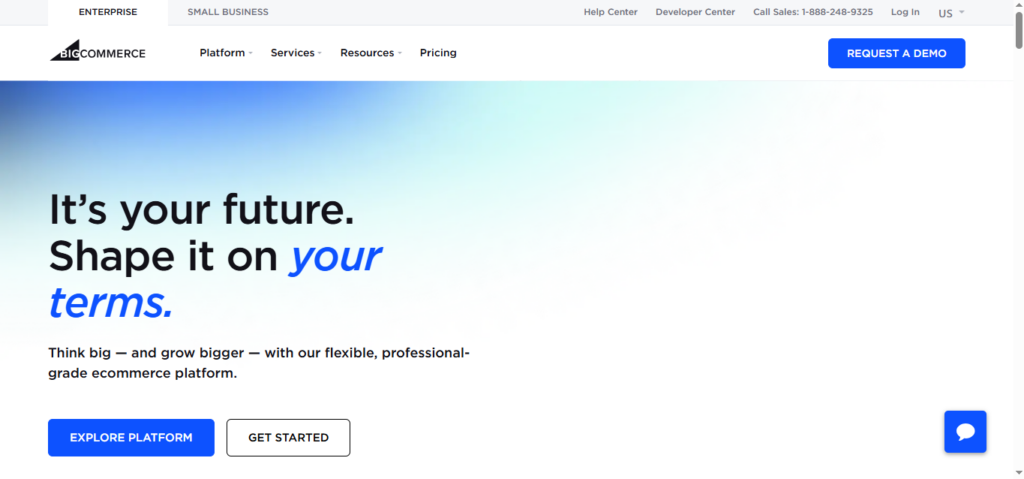If you own an athletic wear store, you’re not just selling activewear. You’re building a brand that people sweat in, stretch in, travel in,and live in. You’re creating gear that becomes part of someone’s daily ritual—their 6 am grind, their lunchtime lift, their Sunday reset walk.
That’s powerful. But turning that kind of vision into a thriving business? That takes more than just great fabric and ambition.
It takes infrastructure. And in this digital-first world, your ecommerce platform is it.
It’s the engine that keeps your brand running, quietly managing your inventory, powering your checkout, hosting your story, and making sure every swipe, tap, and scroll leads to a meaningful (and profitable) connection.
Here’s the truth nobody tells you when you’re starting: you can have the best designs in the game, but if your website is clunky, slow, or confusing, people will bounce, and probably won’t come back.
Choosing the right ecommerce platform isn’t just about picking the one with the most features or the prettiest templates.
It’s about finding a system that matches your momentum, your vision, and your workflow.
One that grows when you grow and doesn’t crumble when you go viral on TikTok or drop a new collection.
We wrote this guide for people like you, the doers, the dreamers, the brand builders who care as much about experience as they do about product.
No tech jargon. No boring comparisons. Just honest, strategic insight on what actually matters when choosing an ecommerce platform for your athletic wear business.
So whether you’re launching your first pair of performance leggings or scaling a brand that already has a cult following, this guide will help you build a store that feels as good as your gear fits.
Why Choosing the Right E-commerce Platform is Crucial for Athletic Wear Brands
For athletic wear brands, your ecommerce platform isn’t just a digital storefront—it’s a core part of the brand experience.
From communicating technical features to supporting community engagement, the platform you choose must align with your brand’s mission to deliver high-performance, stylish, and functional gear.
A well-suited ecommerce platform empowers you to:
🔸️Highlight Product Technology:
Athletic wear customers are deeply interested in performance details.
Your platform should support the use of dynamic content, like videos or hover-triggered callouts, to showcase features such as moisture-wicking fabrics, compression zones, breathability, and stretch.
🔸️Deliver a Frictionless User Experience:
Whether a customer is browsing on a smartphone at the gym or placing a desktop order at home, the shopping experience should be seamless, intuitive, and fast across all devices.
🔸️Offer Personalized Shopping Journeys:
Make product recommendations based on past purchases, browsing behavior, or fitness goals (e.g., yoga, weightlifting, marathon training) to increase engagement and conversion rates.
🔸️Support Rich Visual Media:
High-resolution lookbooks, workout videos, fit and size guides, and 360° product views can significantly enhance brand storytelling and reduce returns.
🔸️Enable Robust Inventory Management:
Managing multiple SKUs by size, color, fit, and function is essential. The platform should simplify variant management and synchronize inventory across all sales channels in real time.
🔸️Integrate with Marketing Tools:
Given the visual nature of fitness fashion, smooth integration with social platforms, influencer campaigns, and user-generated content tools is non-negotiable.
Key Factors to Consider When Selecting an E-commerce Platform
01. Easy to Use
If you’re not a developer (or don’t have one on speed dial), go for a platform that’s built with simplicity in mind. You’ll want:
Drag-and-drop editors
Pre-built templates designed for activewear
A clean, intuitive backend for updating products and content
This saves time, stress, and money, and helps you launch faster without depending on a tech team.
02. Mobile-Friendly, Always
Most shoppers are browsing on their phones, so your site has to look and work great on mobile. Look for:
Mobile-first design themes
Fast loading times
Smooth navigation and checkout on smaller screens
This keeps people from bouncing and makes it easy for them to shop on the go.
03. Ready to Grow with You
Today, you’re an athleticwear brand. Tomorrow? Maybe a full-blown lifestyle empire. Pick a platform that can keep up by:
Handling big traffic spikes during drops
Managing lots of products and categories
Supporting international shipping, currency, and taxes
Scalability now saves you headaches later.
04. Design Control = Brand Power
Your vibe, your rules. You need a platform that lets you fully own your brand identity with:
Customizable themes
Access to custom code (if needed)
Support for visuals like video banners, GIFs, or 3D product views
This is how you create an immersive, on-brand experience that stands out.
05. Smart Inventory & Variant Support
Athleticwear comes in all shapes, sizes, and colorways, and your platform should be ready for that. Look for:
Bulk product uploads
Variant-specific images and info (so shoppers know exactly what they’re buying)
Automatic stock syncing across your website, socials, and marketplaces
Managing inventory should feel simple, not stressful.
06. Built-In Marketing Muscle
Marketing is where the real growth happens. Make sure your platform plays nice with tools like:
Email and SMS automation (think: welcome flows, cart reminders)
Loyalty and referral programs
Influencer and affiliate tracking
The right setup makes it way easier to attract, convert, and keep customers.
07. Analytics That Make Sense
You can’t scale what you don’t understand. Your platform should give you clear, real-time insights into:
Sales performance
Abandoned cart trends
Customer retention and lifetime value
Inventory turnover
Good data = smart decisions = faster growth.
08. App & Integration Options
Fitness brands often want extras, like community tools or tracking integrations. Make sure your platform connects with:
Fitness challenges or apps
UGC and review systems
Live stream classes or forums
Affiliate and ambassador programs
Bonus if it supports custom integrations via API.
09. Costs & Payments — Know the Fine Print
Pricing isn’t just about the monthly plan. Take a close look at:
Transaction fees or surprise costs
Price of add-ons like apps or themes
Supported payment methods (like Apple Pay, Klarna, Afterpay, etc.)
The right setup means happy customers and healthy margins.
The Best E-commerce Platforms for Athletic Wear Brands
Your gear is built to perform, your online store should be too.
Launching an athletic wear brand is no small thing. You’ve nailed the fabrics, perfected the fit, and poured your energy into every detail.
But what about your e-commerce setup?
Think of your online store as the engine powering your customer experience, your brand story, and ultimately, your sales.
It’s more than just a checkout page, it’s where your brand comes to life.
Whether you’re just starting or gearing up to grow, here’s a look at some of the top ecommerce platforms and how each one can help you build, scale, and succeed.
#1. Shopify
If you’re serious about building a brand that grows fast and looks good doing it, Shopify is hard to beat.
It’s popular for a reason; it handles everything from payments to social selling and makes it easy to run your store, even if you’re not tech-savvy.
Why you’ll love it:
Stylish, on-trend templates that match your brand’s aesthetic
Simple checkout with Shopify Payments and Shop Pay
Built-in tools for TikTok, Instagram, and influencer collabs
Huge app library for loyalty programs, dropshipping, and more
A few things to keep in mind:
Costs can add up if you’re stacking paid apps
Custom tweaks might require a developer’s help
Best for:
Brand builders who want an easy, scalable platform that grows with them.
#2. WooCommerce (on WordPress)
WooCommerce is perfect if your brand is more than just a product; it’s a movement.
If you’re planning to lean into blogging, community, or fitness education, this platform gives you full control over your website and SEO.
Why it stands out:
Complete creative freedom to design your site your way
Ideal if you want a blog or editorial vibe alongside your store
No monthly platform fees—just pay for hosting and any plugins you choose
Great for SEO and content marketing
Things to keep in mind:
Takes a bit of tech know-how (or help from someone who has it)
Setup and ongoing maintenance require more hands-on effort
Best for:
Fitness coaches, content creators, or mission-driven brands with a story to share
#3. BigCommerce

BigCommerce is like the high-performance gear of ecommerce platforms built for endurance.
If you’re planning to go international or want to sell to other businesses (like studios or gyms), this one’s for you.
Why it works:
Effortlessly handles large product catalogs and wholesale pricing.
No transaction fees—so your margins stay healthy.
Built-in support for multiple currencies and sales channels.
Powerful B2B tools, ready to go from day one.
Heads-up:
There’s a bit of a learning curve.
You might need a developer for full design flexibility.
Best for:
Fast-growing brands are ready to scale beyond just direct-to-consumer.
#4. Squarespace
If you care deeply about how your brand looks and feels, Squarespace delivers that polished, high-end aesthetic.
It’s not the most powerful ecommerce engine, but it shines when you want your visuals and story to take center stage.
Best for:
Creators, influencers, and boutique activewear brands are launching small, curated collections.
Why you’ll love it:
Stunning templates that are easy to customize
Intuitive drag-and-drop editor
Built-in tools for blogging, email marketing, and scheduling
Great for lookbooks, campaign pages, and visual storytelling
Things to consider:
E-commerce and inventory features are pretty limited
Not ideal for large product catalogs or brands growing fast
#5. Wix eCommerce
Wix is a great option if you’re starting small and want to move fast.
It’s beginner-friendly, affordable, and lets you build a site without hiring a designer.
What’s great:
Quick and easy setup
Budget-friendly pricing
Stylish templates customized for fitness, wellness, and lifestyle brands
Built-in video support—perfect for workouts and tutorials
What’s not-so-great:
Not ideal for large-scale or complex businesses
Lacks some advanced features and integrations
Best for:
Side hustlers, early-stage founders, or anyone testing an idea before scaling up
#6. Olitt
If you just need a simple store up now, Olitt is your go-to.
It’s incredibly lightweight and budget-friendly, making it perfect for getting a one-product brand or niche drop live with almost no setup.
Why it’s worth checking out:
- Free and budget-friendly plans
- Super easy drag-and-drop builder
- Perfect for landing pages or simple storefronts
- Includes a domain and SSL
Might not be right for you if:
- You need advanced inventory management or complex features
- You’re planning for fast, large-scale growth
Best for:
Microbrands, limited drops, or testing products on a shoestring budget.
What’s Right for You? Before You Pick a Platform…
Try before you commit: Use free trials or demos to explore the platform’s backend and see what feels right.
Think long-term: Choose a platform that fits where you’re going, not just where you are now.
Look at integrations: Do you need print-on-demand? Shipping tools? Email marketing? Make sure your platform plays nice with your tech stack.
Conclusion
Choosing the right e-commerce platform isn’t just about features, it’s about finding the right fit for you and your brand’s future.
Whether you’re building a fitness empire or launching a tight capsule collection, your platform should feel like a teammate that supports your growth, creativity, and hustle.

